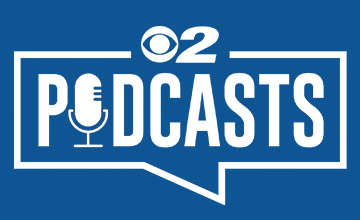Podcast: Play in new window | Download (Duration: 19:36 — 24.2MB) | Embed
Subscribe: Apple Podcasts | Android | RSS
Introducing your baby to solid foods is an exciting milestone for you and for baby. But when and how should you introduce table foods?
Jade Elliott sat down with Tyson Tidwell, a pediatrician with Intermountain Healthcare to talk about tips on how you can create healthy eating habits with your child’s first bites.
The best time to introduce solid foods is when baby is 4-6 months old.
Signs baby is ready for solid food:
- Sitting up with limited support
- Good head and neck control
- Interest in foods and others eating
- Growing appetite
- Able to keep food in the mouth and swallow it
If your child has developmental delays or special needs talk with your doctor about when to introduce solid foods.
What to feed baby
- Softer textures are very important when first introducing foods. Infants usually start with pureed or mashed foods around six months.
- Consider protein sources such as pureed beans or meats or an iron-fortified cereal as first food. Pureed meats and poultry provide protein and valuable nutrition not found in cereal, vegetables and fruits.
- Offer pureed veggies and fruits at 6 months or later. Focus on veggies first so they’re more likely to like them. For other foods, follow baby package directions for age.
- Keep breast-feeding or formula-feeding during this time. Breast milk or formula is still baby’s main source of nutrition and calories.
- After introducing a new food, wait a few days or up to a week to see if there’s an allergic response before trying another type of food.
- Do not add salt, sugar or honey to baby food to encourage eating.
How to feed baby
- Start with small portion sizes of about 1-2 teaspoons, as most of the food will end up on the face, hand and bib. Gradually increase the amount of food over time.
- Have your baby sit up when eating. That could be on your lap or in a high chair.
- Allow infants to feed themselves – without a spoon – when they’re ready (6-8 months old). This helps with overall motor skill development.
- You can introduce a child-sized spoon and safe utensils as they get older.
- Sit and eat with your baby. They’ll want to copy what you do.
- Never force-feed a baby. When they turn their head away or stick out their tongue, they’re probably telling you they’re done eating.
Should I make my own baby food or buy commercially prepared baby food?
That’s a matter of personal preference and convenience. If you make your own baby food, be sure to follow these safety guidelines.
- Wash hands thoroughly.
- Avoid cross contamination, especially when handling raw meats.
- Cook meats to recommended temperature.
- Rinse fruits and vegetables
- Don’t sweeten or add salt.
- Use a hand grinder, electric grinder, blender, or food processor to puree
- Can thin with breast milk or formula if needed
Is organic baby food better?
- Organic costs more than conventional or homemade baby food.
- There is no evidence suggesting organic food is more nutritious than conventional.
- Organic baby food may have a lower risk of pesticide contamination, but conventional baby food rarely exceeds pesticide limits set by the EPA. (2012 Stanford University Study, Crystal Smith Spangler, MD, Annals of Internal Medicine)
Pouches, plastic containers or jars
Pouches are convenient for just putting a small amount on the spoon, so usually there’s less waste. They are less likely to spill or break, but may cost more. Pouches don’t help your child develop as many motor skills as using a spoon, but are great for on the go.
Glass jars are economical, but can spill or break. Plastic is light weight and doesn’t break, but can’t always be resealed. It’s good to use jars or plastic containers at home when you can put food in a dish so your child can learn to use a spoon.
Once you’ve put a used spoon in the food, the saliva can contaminate the food, so throw away food that has saliva in it.
Increase the texture of foods as baby gets older
As infants develop chewing and motor skills, they are able to handle items like a Cheerio or a cracker or small pieces of soft fruit. As the child ages, a variety of healthful foods is encouraged. Don’t leave your baby unattended while they’re eating.
Foods to avoid
Don’t give honey or milk other than breastmilk or formula to babies under one year.
Help prevent your baby from choking
Your baby or toddler is still learning to chew. You don’t want your baby to choke. Cut solid food in very small pieces and keep an eye on your toddler especially if they’re eating firmer foods like hot dogs, grapes, raw vegetables or fruits. It’s a good idea for parents to know how to do the Heimlich maneuver or abdominal thrusts in case their child starts choking. There are different ways to perform the maneuver depending on if your baby is under one year old or over one year old.
Your baby will be able to eat most foods by the time they are one year old
It’s amazing, but after a few months of transition, as your baby becomes a toddler and gets more teeth, he or she will graduate to eating solid foods.
The Baby Your Baby program provides many resources for all pregnant women and new moms in Utah. There is also expert advice from the Utah Department of Health and Intermountain Healthcare that air each week on KUTV 2News.
